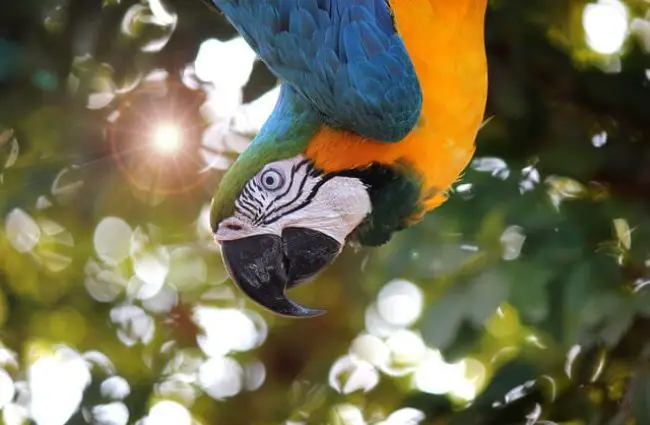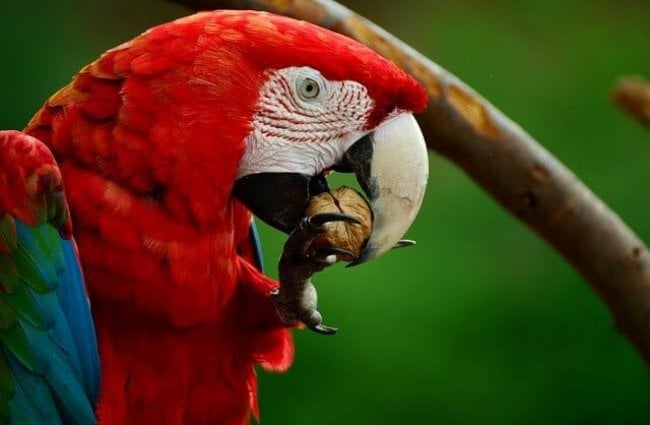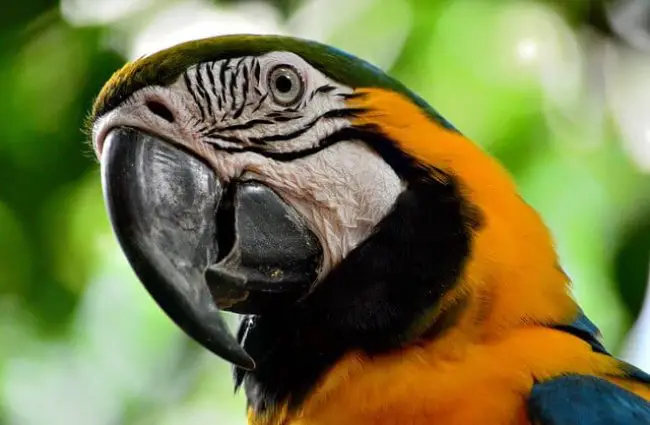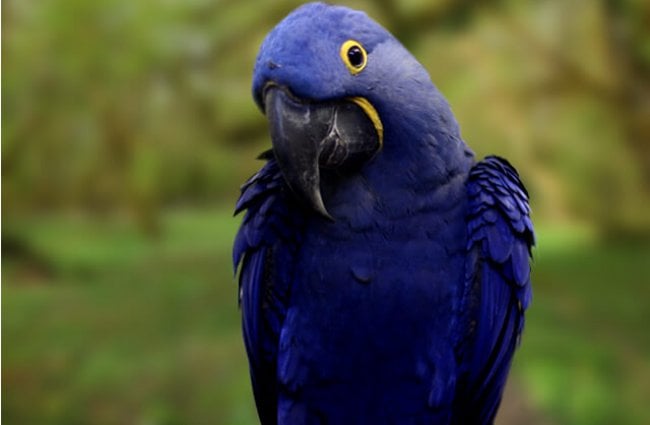The vibrant splash of color against a verdant jungle backdrop, a raucous call echoing through the canopy—these are the hallmarks of the magnificent macaw. More than just a pretty face, these iconic parrots are complex, intelligent, and vital components of their ecosystems. Join us on an exploration of the macaw’s world, from its evolutionary roots to its intricate social life and its profound connection with both nature and humanity.
The Macaw Unveiled: A Symphony of Color and Intelligence
Macaws are a group of New World parrots, renowned for their striking plumage, large size, and impressive longevity. Belonging to the Psittacidae family, they are easily distinguished by their long tail feathers, powerful beaks, and often bare facial patches. These birds are not merely beautiful; they are a testament to nature’s artistry and evolutionary brilliance.
There are approximately 19 species of macaws, though some are critically endangered or extinct. They range dramatically in size, from the diminutive Hahn’s Macaw, barely a foot long, to the colossal Hyacinth Macaw, which can stretch over three feet from beak to tail tip, making it the longest parrot in the world. Their lifespan is equally impressive, with many species living 30 to 50 years in the wild, and even longer in captivity, sometimes exceeding 80 years.

Where the Wild Things Are: Macaw Habitats and Distribution
Macaws are exclusively found in the Neotropics, a biogeographical realm encompassing Central and South America. Their preferred habitats are as diverse as their plumage, though most species thrive in tropical rainforests. These dense, humid environments provide abundant food sources and nesting sites.
- Rainforests: The Amazon basin is a stronghold for many macaw species, including the Scarlet, Blue-and-yellow, and Green-winged Macaws. They inhabit the canopy layer, where they forage for fruits and nuts.
- Woodlands and Savannas: Some species, like the Hyacinth Macaw, are more adapted to palm savannas and open woodlands, particularly in regions like the Pantanal wetlands of Brazil.
- Gallery Forests: These are strips of forest that grow along rivers or wetlands in otherwise open country, providing crucial corridors and resources for macaws.
- Coastal Mangroves: A few species can even be found in coastal mangrove forests, demonstrating their adaptability to various tropical environments.
Understanding their habitat is crucial for anyone hoping to spot these magnificent birds in the wild. Look for them near water sources, especially clay licks (colpas), which are vital for their diet, and in areas with mature trees offering nesting cavities.

A Feast for the Senses: The Macaw Diet
Macaws are primarily herbivorous, with a diet rich in fruits, nuts, seeds, and vegetation. Their incredibly powerful beaks are perfectly adapted for cracking open hard nuts and seeds that would be impenetrable to most other animals. This specialized feeding behavior plays a significant ecological role.
- Fruits and Berries: A staple of their diet, providing essential sugars and vitamins.
- Nuts and Seeds: Macaws are particularly fond of palm nuts, which they can easily crack with their robust beaks. This ability makes them important seed dispersers, as some seeds pass through their digestive system intact.
- Leaves and Flowers: Certain species also consume leaves, flowers, and even bark, especially during specific seasons or when other food sources are scarce.
- Clay Licks: A fascinating aspect of macaw diet is their frequent visits to clay licks, or “colpas.” These riverbank deposits of mineral-rich clay are consumed to neutralize toxins found in some of the unripe fruits and seeds they eat, and to supplement their diet with essential minerals.
Their foraging habits often involve traveling in large flocks, making them a vibrant spectacle as they move through the canopy in search of food.

A Glimpse into Macaw Biology and Behavior
The Evolutionary Journey: Macaw Ancestry
The evolutionary history of macaws, like many parrot species, is a subject of ongoing scientific study. While the fossil record for parrots is relatively sparse, genetic evidence suggests that parrots originated in Gondwana, the ancient supercontinent that included South America, Africa, Antarctica, and Australia. Macaws, as New World parrots, diversified extensively in Central and South America.
Their lineage is believed to have diverged from other parrot groups millions of years ago, adapting to the rich tropical environments of the Americas. Key evolutionary adaptations include their powerful beaks for specialized feeding, their zygodactyl feet (two toes pointing forward, two backward) for gripping branches and manipulating food, and their vibrant coloration for camouflage in the dappled light of the forest canopy and for species recognition.
Studying the genetic relationships between different macaw species helps scientists understand their dispersal patterns across the continent and how various species adapted to specific ecological niches, leading to the incredible diversity observed today.

Love in the Canopy: Mating and Reproduction
Macaws are known for their strong pair bonds, often mating for life. Their reproductive cycle is a fascinating display of cooperation and dedication.
- Courtship: Courtship rituals often involve mutual preening, regurgitation feeding, and elaborate aerial displays. These behaviors strengthen the pair bond and signal readiness for breeding.
- Nesting: Macaws are cavity nesters, relying on natural hollows in large, mature trees, often palms or dead trees. The availability of suitable nesting sites is a critical factor limiting their populations. Some species, like the Blue-throated Macaw, are highly dependent on specific types of palm trees.
- Egg Laying and Incubation: Females typically lay 1 to 4 eggs, which are incubated primarily by the female, while the male provides food and guards the nest. Incubation periods vary by species but generally last around 24 to 28 days.
- Chick Rearing: Macaw chicks are altricial, meaning they are born helpless, blind, and featherless. Both parents are involved in feeding and protecting the young. The chicks fledge (leave the nest) after about 90 to 100 days, but often remain with their parents for several months, learning essential survival skills.
The success of macaw reproduction is highly dependent on a healthy environment with ample food and secure nesting locations, highlighting the importance of habitat preservation.

Macaws in Their World: Ecosystem Contributions and Interactions
Architects of the Forest: Ecological Role
Macaws are not just beautiful residents of the rainforest; they are active participants in its ecological processes. Their feeding habits, in particular, make them crucial to the health and regeneration of their habitats.
- Seed Dispersal: By consuming fruits and nuts, macaws inadvertently disperse seeds across wide areas. While many seeds are destroyed by their powerful beaks, a significant number pass through their digestive system intact or are dropped during feeding, aiding in forest regeneration.
- Prey Species: As large, conspicuous birds, macaws can be prey for various predators, including raptors like harpy eagles, snakes, and arboreal mammals. This places them within the complex food web of the rainforest.
- Bioindicators: The presence and health of macaw populations can serve as an indicator of the overall health of their ecosystem. Declining macaw numbers often signal broader environmental problems, such as deforestation or pollution.
Interactions with Other Animals
Macaws share their vibrant habitats with a myriad of other creatures, engaging in various interactions.
- Interspecies Communication: Their loud calls can sometimes serve as alarm signals for other species in the forest, warning of approaching predators.
- Competition: Macaws may compete with other frugivores and granivores, such as monkeys, toucans, and other parrot species, for food resources and nesting cavities.
- Symbiotic Relationships: While not strictly symbiotic, their visits to clay licks are often shared with other parrot species, creating a bustling social scene at these vital mineral sources.

Macaws and Humanity: A Shared History and Future
Cultural Significance: Macaws in Human Lore
For centuries, macaws have held a special place in human culture, particularly among indigenous peoples of Central and South America. Their vibrant feathers, intelligence, and striking appearance have made them symbols of beauty, power, and spirituality.
- Art and Adornment: Macaw feathers have been prized for their beauty and used in elaborate ceremonial costumes, headdresses, and jewelry by various indigenous cultures, such as the Kayapo of Brazil and the ancient Moche of Peru.
- Mythology and Symbolism: In some cultures, macaws are seen as messengers between the human and spirit worlds, or as representations of the sun, fertility, or rain.
- Companionship: Historically, macaws were kept as pets by indigenous communities, valued for their ability to mimic human speech and their engaging personalities.
Human Interaction: Challenges and Conservation
The relationship between macaws and humans is complex, marked by both admiration and exploitation. Unfortunately, human activities pose the greatest threat to macaw survival.
- Habitat Loss: Deforestation for agriculture, logging, and mining is the primary driver of macaw population decline. As their rainforest homes shrink, so do their food sources and nesting sites.
- Illegal Pet Trade: The demand for macaws as pets fuels a lucrative illegal wildlife trade. Poaching of chicks and adult birds from the wild severely impacts populations, often with high mortality rates during capture and transport.
- Hunting: In some areas, macaws are hunted for their meat or feathers, further exacerbating population pressures.
Conservation Efforts: Recognizing these threats, numerous conservation initiatives are underway globally.
- Protected Areas: Establishing national parks and reserves safeguards critical macaw habitats.
- Anti-Poaching Measures: Increased patrols and community involvement help combat the illegal pet trade.
- Reforestation and Habitat Restoration: Projects aim to replant native trees and restore degraded macaw habitats.
- Breeding Programs: Captive breeding programs in zoos and conservation centers help maintain genetic diversity and provide birds for reintroduction into the wild.
- Community Engagement: Educating local communities about the value of macaws and involving them in conservation efforts is crucial for long-term success.
Practical Insights and Macaw Marvels
Finding Macaws in the Wild: A Guide for Animal Lovers
For those dreaming of encountering a macaw in its natural habitat, careful planning and respect for nature are key.
- Choose the Right Location: Focus on well-known macaw hotspots, such as the Amazon rainforest (e.g., Tambopata National Reserve in Peru, Manu National Park in Peru, Cristalino Lodge in Brazil), the Pantanal wetlands (Brazil), or specific reserves in Central America.
- Timing is Everything: Macaws are most active in the early morning and late afternoon when they forage and fly to and from roosting sites.
- Seek Out Clay Licks: These are prime locations for observing multiple macaw species. Many eco-lodges in the Amazon offer guided tours to clay licks.
- Listen for Their Calls: Macaws are loud! Their distinctive squawks and screeches often announce their presence long before they are seen.
- Use Binoculars: To appreciate their vibrant colors and behaviors from a respectful distance.
- Hire a Local Guide: Experienced local guides possess invaluable knowledge of macaw behavior, preferred feeding trees, and nesting sites, significantly increasing your chances of a successful sighting.
Encountering a Macaw in the Wild: What to Do
Should you be fortunate enough to encounter a macaw in the wild, remember these guidelines:
- Maintain Distance: Observe from afar. Approaching too closely can stress the birds and disrupt their natural behavior.
- Be Quiet: Loud noises can scare them away. Move slowly and speak softly, if at all.
- Do Not Feed Them: Feeding wild animals can alter their natural foraging behaviors, make them dependent on humans, and expose them to inappropriate foods.
- Do Not Touch or Attempt to Handle: Wild macaws are not pets and can deliver a powerful bite.
- Respect Their Space: If you notice signs of distress (e.g., agitated calls, flying away), you are too close.
Caring for Macaws in Captivity: A Zookeeper’s Guide
Caring for macaws in a captive environment, such as a zoo, requires specialized knowledge and dedication to their complex needs.
- Diet: Provide a balanced diet consisting of high-quality parrot pellets, a wide variety of fresh fruits and vegetables, and occasional nuts (e.g., walnuts, almonds, macadamias) as treats. Avoid avocado, chocolate, and caffeine, which are toxic.
- Enrichment: Macaws are highly intelligent and prone to boredom. Provide a constant supply of safe chew toys (untreated wood, natural fibers), puzzle feeders, and opportunities for climbing and foraging. Rotate toys regularly to maintain interest.
- Socialization: Macaws are social animals. If possible, house them in pairs or small groups of compatible individuals. Regular positive interaction with keepers is also vital.
- Housing: Provide a spacious enclosure that allows for flight and climbing. The enclosure should be made of strong, non-toxic materials. Ensure perches of varying diameters and textures are available to promote foot health.
- Environmental Control: Maintain appropriate temperature and humidity levels, mimicking their natural tropical environment. Provide access to natural sunlight or full-spectrum lighting.
- Veterinary Care: Regular veterinary check-ups are essential. Be vigilant for signs of illness, such as changes in appetite, lethargy, feather plucking, or unusual droppings.
- Hygiene: Daily cleaning of the enclosure and food/water dishes is crucial to prevent disease. Provide opportunities for bathing.
- Avoid:
- Small Cages: Restricting movement leads to stress and health problems.
- Unsupervised Interaction: Macaws have powerful beaks and can be unpredictable.
- Poor Diet: An unbalanced diet leads to nutritional deficiencies and illness.
- Lack of Stimulation: Boredom can lead to destructive behaviors like feather plucking.
- Toxic Materials: Ensure all materials in the enclosure are bird-safe.
A Compendium of Macaw Marvels: Interesting Facts
- Tongue Power: Macaws have a dry, scaly tongue with a bone in it, which they use to tap into fruits and nuts.
- Facial Fingerprints: The bare skin patches on a macaw’s face are unique to each individual, much like human fingerprints.
- Loudest Parrots: Their calls can reach up to 105 decibels, comparable to a motorcycle, allowing them to communicate over long distances in dense forests.
- Tool Users: Some macaws have been observed using tools, such as small stones, to help crack open nuts.
- Color Vision: Macaws possess excellent color vision, which helps them locate ripe fruits and identify other macaws.
- Monogamous Mates: Many macaw species form strong, lifelong pair bonds, often seen flying side-by-side with their mate.
- Long-Lived Legends: With proper care, some macaws can live for over 80 years, making them one of the longest-living bird species.
- Zygodactyl Feet: Their unique foot structure, with two toes pointing forward and two backward, provides an exceptional grip for climbing and manipulating objects.
From their dazzling plumage to their complex social structures and vital ecological roles, macaws are truly extraordinary creatures. Their survival is inextricably linked to the health of our planet’s most biodiverse ecosystems. By understanding and appreciating these magnificent birds, we can all contribute to their conservation, ensuring that their vibrant calls continue to echo through the rainforests for generations to come.

![Red Angus Closeup of a beautiful Red Angus cowPhoto by: U.S. Department of Agriculture [pubic domain]https://creativecommons.org/licenses/by/2.0/](https://animals.net/wp-content/uploads/2020/03/Red-Angus-4-238x178.jpg)




![Red Angus Closeup of a beautiful Red Angus cowPhoto by: U.S. Department of Agriculture [pubic domain]https://creativecommons.org/licenses/by/2.0/](https://animals.net/wp-content/uploads/2020/03/Red-Angus-4-100x75.jpg)

